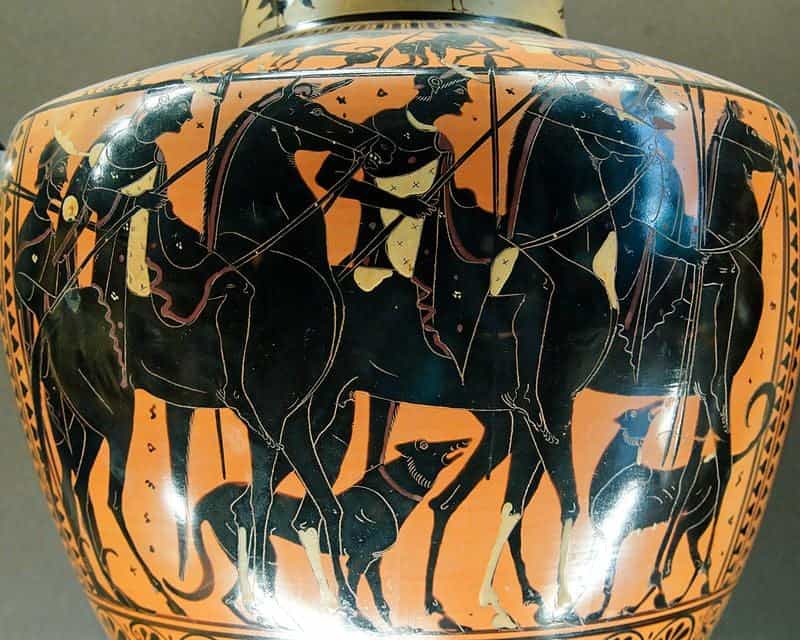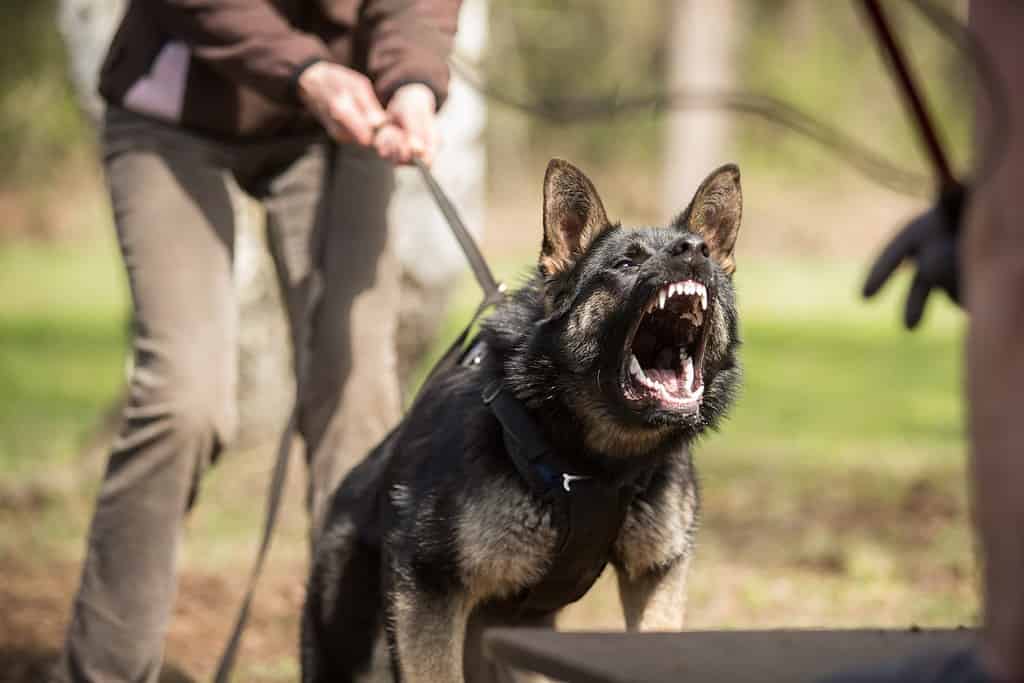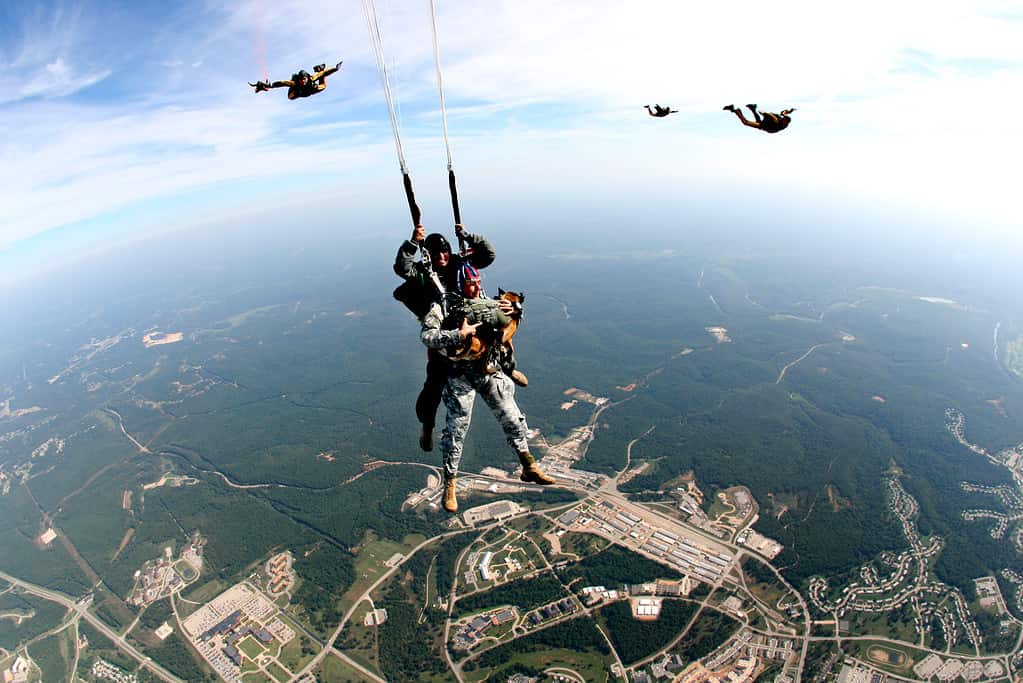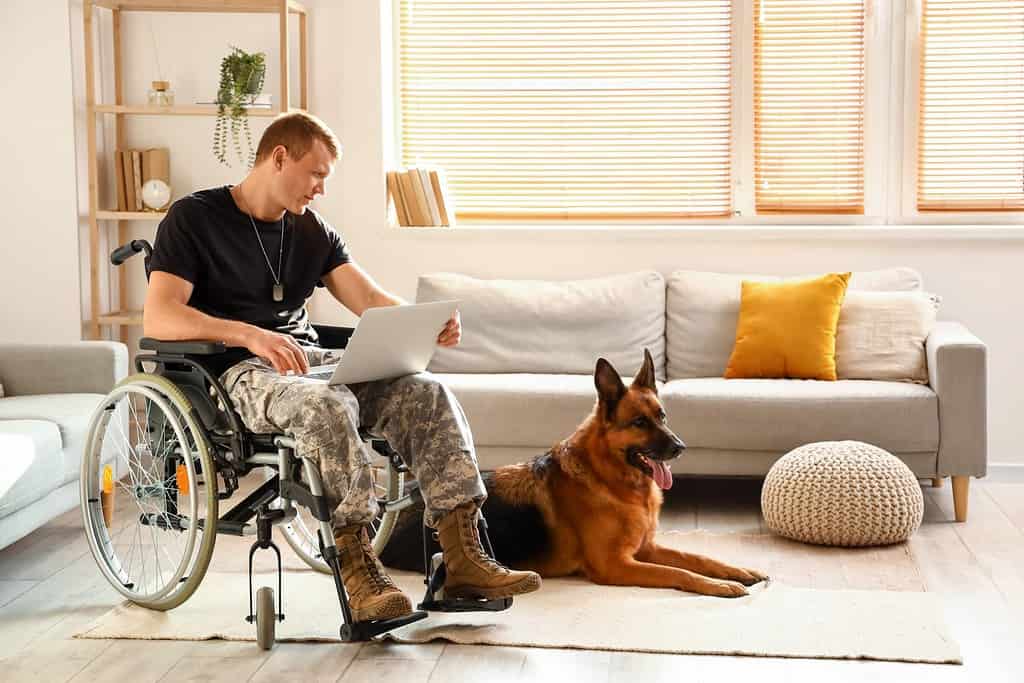Wars affect both human beings and animals, disrupting natural habitats. And throughout history, animals have actually fought in wars. Horses, camels, elephants, pigeons, and dolphins are just a few species that have been “drafted” into the military. But no animal has served in as many roles faithfully alongside humans as dogs. Explore with us the selection, training, and service military working dogs complete, and how you could adopt one yourself to thank it for its service.
Military Dogs in History

Many ancient people, including the Greeks, used dogs in hunting and military operations.
©Public domain, via Wikimedia Commons – License
The great empires of the ancient world: Assyrian, Greek, Persian, Egyptian, Roman, and others all used dogs alongside soldiers for scouting out territory and standing guard. Archaeologists have even uncovered ancient battle armor for dogs. In World War I and II dogs played invaluable roles. They would bring messages and supplies to soldiers, find the wounded, and lead rescuers to them, or lay beside the dying to bring them comfort. Sometimes a dog’s role was as simple as raising the troops’ morale as the camp mascot.
Modern Service Roles of Dogs

The military uses dogs for a variety of roles. None are more fearsome than military attack dogs.
©DTeibe Photography/Shutterstock.com
About 1,600 dogs serve in the U.S. military, represented in all the branches of it. Some of the specific jobs they do include:
- Detecting explosives, such as IEDs (Improvised Explosive Devices)
- Tracking the enemy or one’s own soldiers.
- Guarding – sounding the alarm when an intruder approaches or keeping a watch over prisoners.
- Patrolling – following a set circuit to monitor a perimeter for intruders.
- Attacking – protecting its handler during close combat and chasing and bringing down a fleeing opponent.
- Narcotics detection – identifying hiding places of drugs being smuggled across borders.
- Search and rescue – finding and assisting lost or wounded people.
- Service dogs for veterans – after their military service, some canines become companions to human veterans.
Training K-9 Fighters

Some military dogs, like this one, skydive in the arms of their handlers.
©ESgt. Vince Vander Maarel, Public domain, via Wikimedia Commons – License
The Department of Defense breeds about 13% of the dogs it trains and buys the rest from elite breeders around the world. German Shepherds, Belgian Malinois, Labrador Retrievers, and German Shorthaired Pointers are some of the breeds serving in the U.S. Military. Considering the effort that goes into developing the dog’s skills, a trained military dog has an estimated value of $150,000!
All potential military working dogs go through a 120-day training program at the 341st Training Squadron in San Antonio, Texas, which has been training four-footed fighters since the 1950s. After evaluating their health and temperament, trainers accept about half the candidates for military service. Those who pass training then go on to handlers in specific branches of the military. A military dog must get accustomed to unfamiliar smells and loud noises such as explosions and gunfire. Some even learn to skydive, attached to their handlers and wearing a kevlar vest and goggles!
The Role of Military Working Dog Handlers

Military dogs are considered NCOs with a higher rank than their handlers.
©ANURAKE SINGTO-ON/Shutterstock.com
Dogs are considered honorary NCOs, with a rank always higher than their handlers. This custom is intended to motivate handlers to treat the dogs with the utmost respect. Military working dog handlers are responsible for caring for K-9 units and providing for their needs and ongoing training. Positive training methods are used so that the dog will feel motivated and rewarded for obeying commands and protecting its handler. Some people have described the role of the handler as being an “interpreter” to explain to the unit what the dog is “saying” about a situation. A close bond often develops between a military dog and its handler, and this is the foundation for the dog’s successful service.
Retired Military Dogs

Some veteran military canines become companions to human veterans.
©Pixel-Shot/Shutterstock.com
Dogs that serve well can receive military promotions, honors, and awards. When one passes away, it can have a military funeral. Tragically, until the year 2000, veteran dogs were euthanized when they could no longer serve due to age or injury. Congress passed a law that year, however, that allowed private citizens to adopt service dogs that were tested and deemed suitable for family pets. The dogs cannot serve in the military again, however.
Anyone interested in adopting a puppy, young adult dog, or injured or retired military service dog can request an application packet online at the 37th Training Wing website. Some of the criteria are to have a 6-ft high fenced enclosure for the dog; to have no children under 5 in the house; to have no more than three other dogs; and to pick up the dog in San Antonio with a leash, collar, muzzle, and dog crate.
What a great way to show appreciation to the ultimate “good dog,” trained by the U.S. military to protect and serve!
The photo featured at the top of this post is © New Africa/Shutterstock.com
Ready to discover the top 10 cutest dog breeds in the entire world?
How about the fastest dogs, the largest dogs and those that are -- quite frankly -- just the kindest dogs on the planet? Each day, AZ Animals sends out lists just like this to our thousands of email subscribers. And the best part? It's FREE. Join today by entering your email below.
Thank you for reading! Have some feedback for us? Contact the AZ Animals editorial team.






